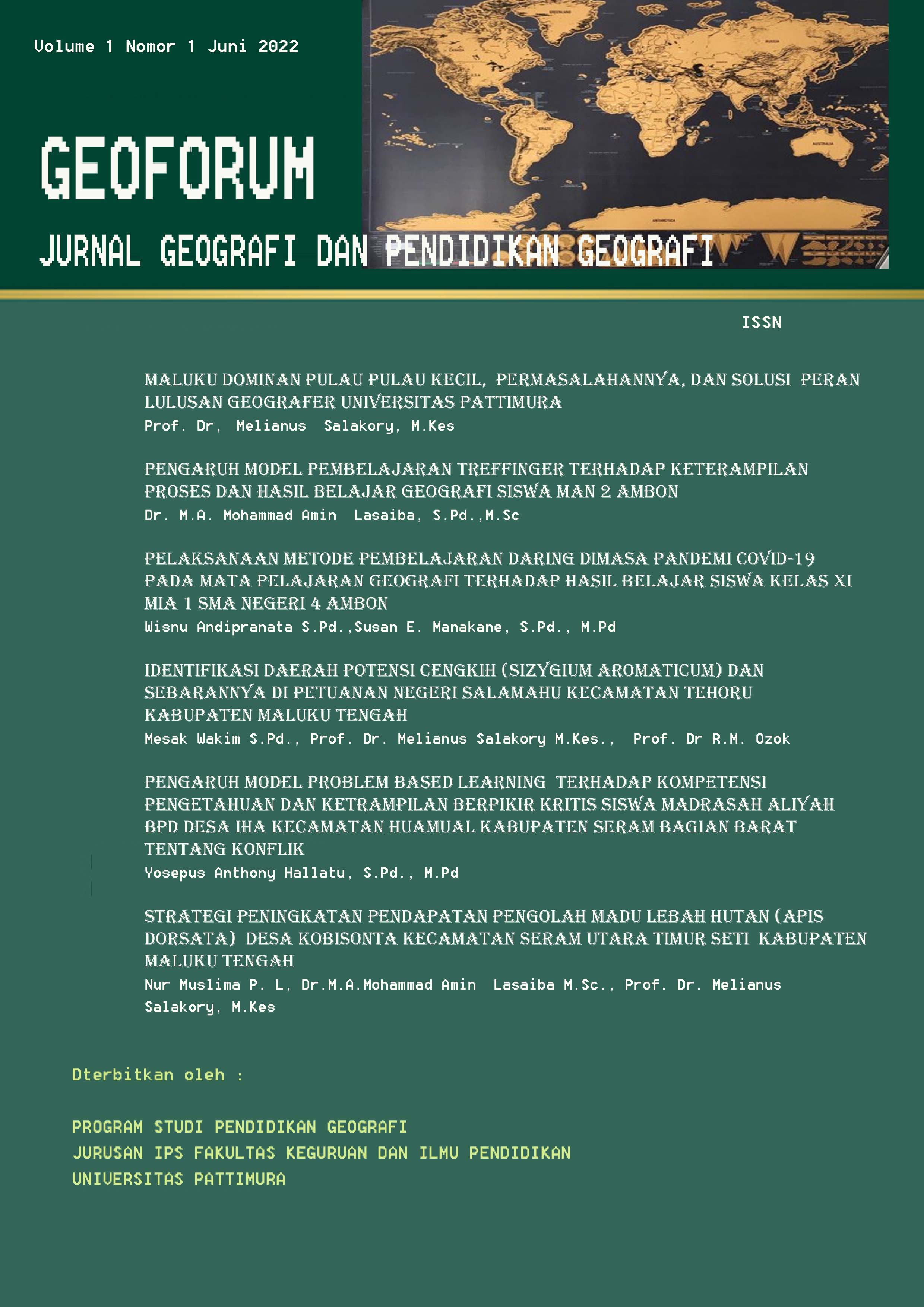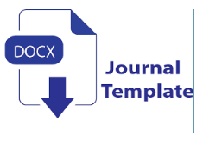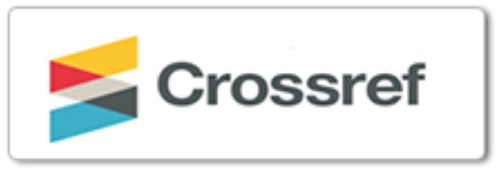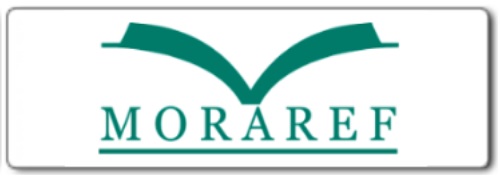Strategy for Utilizing Lontar Trees (Borassus flabellifer) as Raw Material for Palm Sugar to Improve Family Economy in East Oirata Village, South Kisar District.
Strategi Pemanfaatan Pohon Lontar (Borassus Flebellifer) Sebagai Bahan Baku Gula Merah dalam Meningkatkan Ekonomi Keluarga Desa Oirata Timur Kecamatan Kisar Selatan
Abstract
Kisar Island, rich in natural diversity, is covered by Lontar trees, which account for nearly a quarter of its area. In the village of East Oirata, staple crops such as corn and Lontar trees are crucial assets for most residents who rely on agriculture and fishing. Although the Lontar tree, known as the tree of 800 uses, has yet to be fully optimized, the processing of Lontar contributes to the local economy. Lontar palm sugar, which is highly nutritious, supports the growing market trend for more natural products. The people of Kisar Island, particularly in East Oirata Village, are striving to enhance the marketing of Kisar palm sugar through innovation and government support, seeing it as an economic opportunity that can improve their well-being. The qualitative research method is an approach that focuses on investigating the conditions of natural objects. Utilizing positivism or interpretive philosophy, the researcher acts as the primary instrument. A holistic understanding is provided through data triangulation, such as observations, interviews, and documentation. Unlike quantitative research, qualitative research produces descriptive and interpretative data processed inductively. This approach allows for in-depth analysis of phenomena, with flexibility and complexity in understanding social, cultural, or behavioural realities. The production process of Lontar palm sugar in East Oirata Village relies heavily on the availability of quality Lontar trees, local knowledge, and experience. Production costs include fixed and variable expenses, with sales significantly contributing to family income. SWOT analysis reveals strengths in resources and capital, weaknesses in production support limitations, opportunities from government attention and high consumer demand, and threats to the availability of supporting materials
Downloads
References
Ansiska, P., Asep, Helmi, D., Windari, E. H., & Oktoyoki, H. (2022). Sosialisasi Pemanfaatan Limbah Kulit Kopi Dalam Upaya Perbaikan Kualitas Tanah. INCOME: Indonesian Journal of Community Service and Engagement, 1(2), 35–40. https://doi.org/10.56855/income.v1i2.53
Arif, S., Isdijoso, W., Fatah, A. R., & Tamyis, A. R. (2020). Tinjauan Strategis Ketahanan Pangan dan Gizi di Indonesia: Informasi Terkini 2019-2020. In The SMERU Research Institute.
Asriani, R., Salma, W. O., & Jafriati. (2022). Analisis Faktor Risiko Kejadian Stunting Pada Anak Baduta (6-24 Bulan) Di Wilayah Kerja Puskesmas Mowila. Jurnal Ilmiah Ilmu Keperawatan, 1(2020), 123–128.
Daracantika, A., Ainin, A., & Besral, B. (2021). Pengaruh Negatif Stunting terhadap Perkembangan Kognitif Anak. Jurnal Biostatistik, Kependudukan, Dan Informatika Kesehatan, 1(2), 113. https://doi.org/10.51181/bikfokes.v1i2.4647
Ghassani, L. N., Aruben, R., & Rahfiludin, M. Z. (2016). Gambaran Pengetahuan Sikap Dan Praktik Ibu Dalam Menyediakan Konsumsi Sayur Pada Anak Usia Sekolah Dasar Di Semarang Tahun 2016. Jurnal Kesehatan Masyarakat, 4(April), 197–207.
Hafiza, D., Utmi, A., & Niriyah, S. (2021). Hubungan Kebiasaan Makan Dengan Status Gizi Pada Remaja Smp Ylpi Pekanbaru. Al-Asalmiya Nursing Jurnal Ilmu Keperawatan (Journal of Nursing Sciences), 9(2), 86–96. https://doi.org/10.35328/keperawatan.v9i2.671
Hariyanto, M. T. (2023). Pemanfaatan Teknologi Greenhouse dan Hidroponik Sebagai Solusi Menghadapi Perubahan Iklim di Desa Dlanggu. Prosiding Patriot Mengabdi, 2(1), 298–304.
Hayati, A., Fujiana, F., & Murtilita. (2022). Faktor-Faktor Yang Mempengaruhi Kejadian Stunting Pada Balita Umur 24-59 Bulan. Medical Jurnal of Al-Qodiri, 7(2), 84–95. https://doi.org/10.52264/jurnal_stikesalqodiri.v7i2.166
Khatimah, N., Erham, E., … F. F.-… P. K., & 2023, undefined. (2023). Edukasi Gizi yang Tepat Dalam Mencegah Stunting dengan Menggunakan Media Booklet dan Poster. Ejournal.Unma.Ac.Id, 4(4), 3491–3497. https://www.ejournal.unma.ac.id/index.php/bernas/article/view/6849
Layaman, L., Nasichah, N. A., & Hanim, T. F. (2020). Pemberdayaan Remaja Melalui Budidaya Tanaman Hidroponik Kampung Kertasemboja, Kelurahan Pegambiran, Kota Cirebon. Dimasejati: Jurnal Pengabdian Kepada Masyarakat, 2(2), 191. https://doi.org/10.24235/dimasejati.v2i2.7074
Leuwol, F. S., Ramdan Yusuf, Eko Wahyudi, & Nunung Suryana Jamin. (2023). Pengaruh Kualitas Lingkungan Terhadap Kesejahteraan Psikologis Individu di Kota Metropolitan. Jurnal Multidisiplin West Science, 2(08), 714–720. https://doi.org/10.58812/jmws.v2i08.592
Novianti, S. (2021). Faktor Aksesibilitas Dan Praktik Pemberian Makanan Pada Anak Usia 6-23 Bulan Di Masa Pandemi. Jurnal Kesehatan Komunitas Indonesia, 16(2), 165–178. https://doi.org/10.37058/jkki.v16i2.2575
Punuh, S. N. A., Sudirman, A. A., & Modjo, D. (2023). Hubungan Kejadian Stunting Dengan Capaian Perkembangan Anak di wilayah Kerja Puskesmas Motolohu Kabupaten Pohuwato. Usada Nusantara: Jurnal Kesehatan Tradisional, 1(2), 79–93.
Rauf Jabal, A., Alang, M. S., & Rahmatiah, S. (2022). Strategi Penyuluh Kesehatan Dalam Mengurangi Stunting Pada Anak Di Puskesmas Tarowang Kecamatan Tarowang Kabupaten Jeneponto. Jurnal Bimbingan Penyuluhan Islam, 2010, 198–208.
Roidah, I. S. (2014). Pemanfaatan Lahan Dengan Menggunakan Sistem Hidroponik. 1(2), 43–50.
Sari, N., & Budiono, I. (2021). Pengaruh Pemberian Fruitable Card untuk Meningkatkan Konsumsi Sayur dan Buah Anak Usia Pra Sekolah. Indonesian Journal of Public Health and Nutrition, 1(1), 472–478. http://journal.unnes.ac.id/sju/index.php/IJPHN
Wachjar, A., & Anggayuhlin, R. (2013). Peningkatan Produktivitas dan Efisiensi Konsumsi Air Tanaman Bayam (Amaranthus tricolorL.) pada Teknik Hidroponik melalui Pengaturan Populasi Tanaman. Buletin Agrohorti, 1(1), 127. https://doi.org/10.29244/agrob.1.1.127-134
Copyright (c) 2024 Sintia Ratusehaka

This work is licensed under a Creative Commons Attribution 4.0 International License.





















